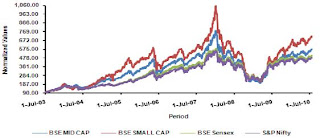It has been sometime now that the report came out about
Maruti Suzuki loosing a significant market share in the Indian Car market. interestingly, the report for Maruti loosing its market share comes at a time when the overall car sales are reported to be shooting up with a record number. So what's going wrong with Maruti?? Is it a call for the investors to exit this stock? Let's have a look at certain points:
Many things can be considered here. Maruti has come out with various new models, competitive prices, new designs and so on, and they are also backed by many other historical things - largest service netowrk in the country, most trusted car brand of India, claims of having the highes retail value for used cars, known to be a brand for common man of India and so on. Still, Maruti has lost its market share.
 Design of new Maruti Suzuki Cars
Design of new Maruti Suzuki Cars:
First and foremost, let's look at the new models - Maruti launched
Eeco recently, then new version of WagonR, and then there are these other cars like Estillo, A-Star, Ritz, etc. However, looking at the designs of Wagon-R, it makes me wonder whether the design engineers at Maruti have taken a break or what? WagonR was one of the most successful cars from Maruti. They launched the new upgraded version with a new design called "Blue-Eyed Boy". What came out was a complete turn-off for many aspirants (buyers), as the looks just made them dump their decision to buy new WagonR. Compare that to Beat or Polo or i10, and you will know why the looks of WagonR are a complete turn-off. They call it the "Blue-Eyed Boy". Sounds good, but what about the blue eyes, when I want to buy some colour other than blue??
Then came the new Alto K10 - except for the new K Series engine promising better mileage, nothing has changed. It is still the same conjusted space inside. And on top of that, the price has increased.
I believe Maruti needs to really work on the design and looks.
Pricing of Maruti Suzuki Cars:
Yes, its true that maruti still offers the economical but quality cars, but are the prices still competitive??
Take Alto K10, take WagonR, they all are now above 3 Lakhs. Add to it the other charges and the price happily shoots upto 3.6 plus. Someone who wants to spend 3.6 can as well go for other options available, that too with better looks from the brands of Hyundai, Volkswagen, Chevrolet and so on. Then comes the games played at the showrooms - many stories are known about how financing is forced onto the customers and that's not just with Maruti, it is with other car makers and two wheelers as well - if you want to buy you vehicle on your own without loan, the waiting period will be longer (in months), but if you want to buy it on loan (so that costs extra), you can get it as early as next week.
Although this is a problem with every car and bike manufacturer, it is something which maruti can work on improving.
With the current competitive offerings from other brands, Maruti is no longer offering competitive prices. Right from 1 Lakh car Tata Nano to high end hatchbacks like Honda Jazz, Maruti needs to position its prices to be "real competitive".
The metro city youth are now open to more choices - Chevrolet, Volkswagen, Nissan, etc. And its the small city regions which Maruti is loosing out on. These rural, semi-urban, non-metro small city population is still not open to the moderate to high prices of maruti. They still expect better economical prices.
The taste is changing, the variety is changing, people expect more.
Servicing & Support of Maruti Suzuki Cars:
Now that is what Maruti has been banking upon - the widest network of services nationawide. However, there have been many problems which dissatisfy a customer. Right from forceful selling of extra accessories, to forcing the customer to go for extra repairs, to forcing cars to be bought on loan for early delivery even if the customer is willing to buy on his own.
The moment a customer enters the showroom, he is quoted a big price upfront. What is said to be costing 3 Laks in the ads, easily becomes 4 lak plus. And that's where people start to looks around for options. In India, customers are still new to the cars. They may not know what a bumper is, what are fog lamps and how does ABS work. The problem at showrooms is that customers go their with 3L price tag in mind, and the representative quote something like 4 Lk plus. Even a customised number plate is quoted to cost 2000 Rs. while buying a car. If the customer does not notice it, he finds it out later and feels cheated. These are straightaway turn-offs.
Its the service networks that make or break the brand.
My own experience with the authorized dealers and service stations has been quite dissatisfying. Even during the guarantee period, replacement of faulty parts took more than 2-3 months and several reminders and escalations through their wesbite. A magazine also carried out stories about authorized service centers selling faulty and duplicate parts in the name of Maruti.
As a brand name, it is the responsibility of Maruti to take due care of these instances. Agreed that largest network is difficult to manage, but if one doesnt do it, one should be prepared to take the hit.
Overall Maruti Suzuki Cars:
It's time for Maruti to look back at what went wrong and why did they loose the market share so significantly. The car market has seen many new players - competition is tough. People have options, they know to explore them before going for a decision of laks.
So what if there is the largst repair network. Are these networks living upto the promised expectations set by the brand or are they breaking it for earnig more money by selling extra unwanted accessories and forcing unwanted repairs?
Design part - need a complete overhaul. With the likes of Beat, Figo, Polo hitting the streets, customers may not want to settle for the looks of WagonR or the conjusted spaces of Alto K10 that fall into the same price band












